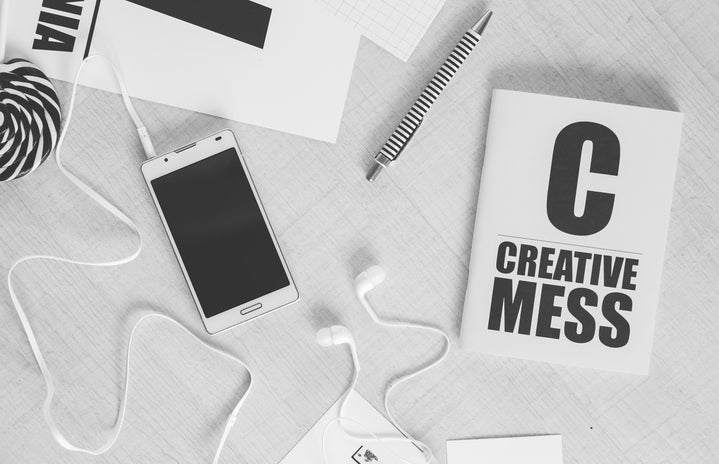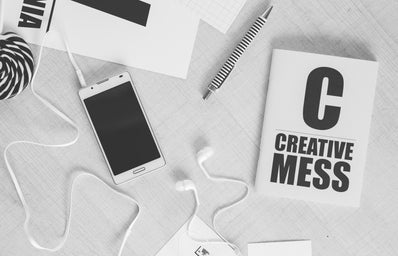As a girl in my senior year as an illustrator at SCAD, I’m freaking out a little bit. Illustration is great and pretty creatively freeing, but as my last quarters approach me, I become more and more nervous for how I’m going to approach diving into the next portion of my life. Something that I really like to do to kind of ease my own apprehension and also collect inspiration is to find other artists, primarily other young illustrators, and become familiar with their work, and sometimes I gather up the courage to send them an email. I love doing this because for one, everyone is SO NICE. Other artists honestly love talking to and helping out other artists. Secondly, asking someone who is killing it in the field that you’re about to go into about some of the questions you have about the field is just so rewarding and helps you gain a little more insight than just talking to the people who give you assignments every week. I highly recommend that every art student go out on a little bit of a limb, contact some of the artists that you admire and start a conversation. Again, they’ll most likely be super nice and more than willing to answer any questions you may have about the industry and their approach to it.
Recently, I had the pleasure of talking with super talented and equally cool Illustrator SCAD alumna, Mackenzie Baker. Mackenzie graduated with a BFA in 2016 and is currently building her freelance career in several markets of illustration. She describes her aesthetic as “new retro”, which features strong linework with solid poppy colors and a gritty texture thrown in to contrast the clean, digital technique. Immediately after graduating from SCAD, she was able to snag an impressive and enviable internship at none other than Adult Swim in Atlanta, GA. I was able to ask Mackenzie about herself as a young illustrator, this and some things that I’m always interested in hearing other artists talk about. Her responses were lovely, genuine, and very helpful. If you want to find more of her amazing work, you can find her on Instagram @mackenziebakerillustration and of course, on her website. Enjoy!
Illustration courtesy of mackenziebakerillustration.com
HC: What do your sketchbooks look like? Are they similar to your finished illustration style or are they more experimental?
MB: My sketchbooks are actually more written than drawn. When I have thoughts or ideas that I think will make good illustrations, I start with writing down every aspect of that idea: a description, potential colors, mood, audience, parameters of the assignment, (if it isn’t a personal project) and word associations. Only then will I start doodling and fleshing out composition- but even then, my drawings are extremely quick and loose because I don’t like spending time on drawings that won’t eventually be a final product. I guess I have a more analytical way of approaching sketchbooks…because I don’t really doodle, either. If I feel like drawing outside of a project, it’s usually on scrap tracing paper.
HC: How has your work/your way of working changed since starting in illustration?
MB: When I first started in the illustration program at SCAD, my work was more photorealistic stuff made with graphite, charcoal, or chalk pastel- but almost always portraits. When I was introduced to ink brush pens, it basically changed my life, and majorly shifted my style. (Thank goodness for that, because the other media was destroying my hands.) I started approaching my drawings with a more graphic novel-esque style; so I still do somewhat realistic-looking portraits, but now with a more graphic edge, I suppose. It’s also a lot quicker for me to finish a piece now because I color digitally in Photoshop, so I get those bright opaque pop colors I love while still appeasing my love of traditional drawing.
HC: Were you ever worried about developing a style or process that was true to yourself? If so, how did you get past that fear?
MB: I never really experienced the inner struggle of finding my style like a lot of my peers- my style shift was very natural, fortunately. With my old work, I would start with a general pencil outline and then fill in shape, color, light, etcetera with whatever messy media of choice. So when I started using ink brush pens, I just inked over those pencil outlines instead, which eventually I refined and made my “style.” I think that style should always be your natural way of drawing or finding a solution to a problem; it’s good to have inspirations and influences, but if you mimic something just because you like it, it will likely come across forced and unnatural.
HC: What do you think is the best way to promote yourself? How much of that do you do on a regular basis?
MB: Social media is the most obvious way to promote yourself: it’s free, everyone’s on it already, and if you’re doing it right you can bring a lot of attention to yourself. Of course there are physical mailers and reaching out to art directors personally, (which you should still do!) but I have been approached several times in the past few months from doing nothing other than letting my art hang out on the internet. Post your work on social media, keep it updated, and clients will find you. Now, imagine how many more jobs you’ll get if you put forth more than just the minimum effort! Also, the best places to post are Instagram (my favorite) and Behance- people are looking there, I promise.
HC: What was one of the most memorable/valuable things you took from your time at SCAD?
MB: I learned a lot during my four years at SCAD, about art, life, and myself. But I think the most important things are as follows: Sleep is very important. Ya’ll need to go the hell to sleep, because even if you’re willing to sacrifice your health for your art, (please don’t, that’s dumb) nine times out of ten it isn’t going to turn out the way you wanted because you aren’t on top of your game. In general, it’s really important to be good to yourself, especially in an intense environment like SCAD- even more so if you are battling an illness, mental or physical. It may not be easy to admit, but if you do your best to take care of yourself and reach out for help early on, you are more likely to succeed later. There are people that care about you and are willing to work with you, but you have to let them know.
Illustration courtesy of mackenziebakerillustration.com
HC: Can you talk about how you landed your gig at Adult Swim? (WHICH IS SO COOL, BY THE WAY) Did you approach them? Did they approach you?
MB: So, you know how your professors and advisors are always telling you to check the SCAD Job Portal? Well, I’m here to tell you that YES YOU SHOULD. I found a listing for my internship with Adult Swim on the job portal, and followed the directions to apply. I sent a link to my website (portfolio) and submitted my resume in addition to the basic application. I was later notified that I landed an interview (which was recorded) and then after that another interview with my manager through Skype, and then an email that I got it! If you want to apply, make sure your website and resume are top notch in content as well as design. If you get an interview or meet someone associated with the company, be sure to send them a thank you email a day or so afterward, and maybe include a little drawing or something. Showing your personality and/or humor is very important here.
HC: How long does it typically take you to develop a finished piece? From sketch to being ready to send off.
MB: It usually takes me about a week or less to complete an illustration, including the time it takes to communicate back and forth with a client/art director: a day for ideas/word association and rough thumbnails, the next day for pencil comps, then refined pencil sketch and inking, rough color comps, and then the finished product. That’s if the timeline is forgiving- plus it takes me a little longer right now since I have a day job and I actually enjoy sleeping at night.
HC: Where is your favorite place to draw? Describe your ultimate comfy creative scenario. Coffee? Cats? Background youtube videos?
MB: This is so generic, but I have to draw at my desk with my bright lamp. I have too many things working against me to draw any place else- I’m a 22 year old elderly woman with a bad eyes and back pains. I always listen to music while I draw, though.
HC: Do you do any personal work? What does that explore that might be different from how you go about your commercial work?
MB: I do personal work, but it is usually only ink drawings and never colored, simply because it is difficult for me to devote hours to something unpaid when I should be working on a paying project. However, it is very important to take breaks from doing things other people want you to do in order to regain sanity. It’s just about finding that balance.
HC: Anything else you want to talk about? The floor is yours and open to whatever you want to say to other SCAD kids, specifically illustration kids.
MB: To all of you that want to freelance, I’m just letting you know, it’s hard. It can most certainly be done, but you have to really want it, and even then it won’t always be kind to you. I was told that it takes about five years to establish a lucrative freelance career, so keep that in mind as you promote yourself and gain contacts. Don’t get discouraged though, because there are tons of other illustrators out there doing the same exact thing, waiting on those callbacks. Just keep drawing and stay open to opportunities; always make time to draw, and don’t get stuck at a job you hate just because it pays the bills. Remember, you may have to wait tables, but you’re still a full time illustrator.
Illustration courtesy of mackenziebakerillustration.com

